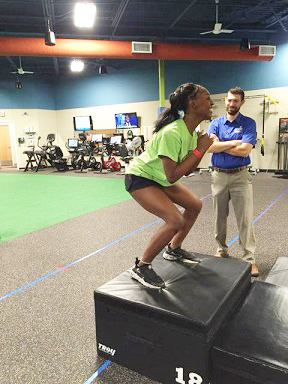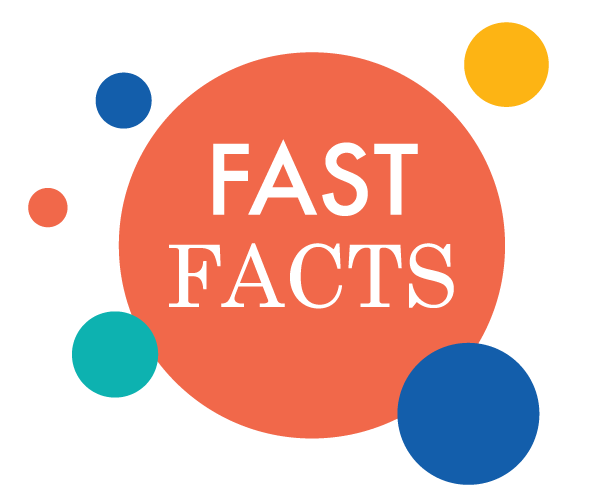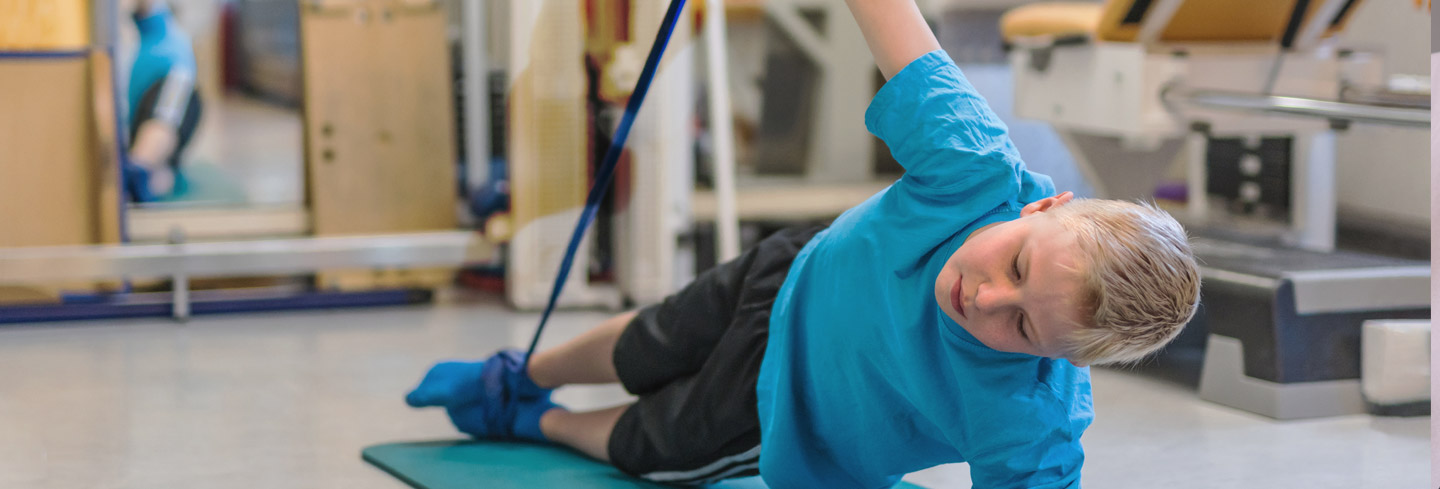 Whether your child just joined Little League or is a star high school athlete, your job is the same — to challenge them and cheer them on. It also means making sure they stay safe and healthy when they play.
Whether your child just joined Little League or is a star high school athlete, your job is the same — to challenge them and cheer them on. It also means making sure they stay safe and healthy when they play.
And if an injury does occur, it means getting them the care they need to get back into the game.
Our job in the Sports Physical Therapy Program at Children’s Nebraska is to combine our experience and research with your child’s passion for sports to help them safely return to play and reduce the risk of further injury. Every day, we help young athletes like yours get back to the activities they love.
What Sets Children’s Apart?
We are the only program in the area dedicated solely to treating pediatric and adolescent sports injuries:
- We’ve focused on a child-specific approach to physical therapy that keeps your child’s mental and physical development in mind.
- Children’s is the only sports physical therapy program in Omaha where every one of our physical therapists is board certified in either sports or orthopedics. Board certification requires additional education and continuing medical education, ensuring that your child always receives the most advanced, up-to-date care.
- One of the biggest risk factors for many sports injuries is re-injury. We work to keep your young athlete safe when they go back to their sport.

Did you know …
- ACL injury prevention programs reduce the risk of all ACL injuries by half and non‐contact ACL injuries by two‐thirds in female athletes.
- Not all hamstring injuries are the same: Certain types require longer rehabilitation. Re-injury rates are more often due to weakness, not flexibility. But it is possible to reduce hamstring injury and re-injury risk.
- Changing the way you run can decrease your risk of certain injuries, like stress fractures, shin splints, and knee pain.
“I enjoy working with kids to help them return to the activities they love. Sometimes that activity is recreational. Sometimes it’s competitive. Our job, regardless of the patient’s situation, is to help them get from injury to returning to the field, court, or track.”
— David Potach, PT, MS, SCS, CSCS, Supervisor, Sports Physical Therapy, Children’s Nebraska
Conditions We Treat
-
Back Pain
Most sports-related back pain comes from sprains and strains, overuse, or stingers:- A sprain is the stretching or tearing of a ligament (the band of tissue that connects two bones together) in the back.
- A strain is the stretching or tearing of a muscle or tendon (the cord of tissue that connects bones to muscles). Strains are common in the back.
- An overuse injury occurs when your child constantly moves a body part in the same way, without allowing time to rest. Spondylolysis — a crack in one of the small bones that make up the spine — is an overuse injury often seen in children who play sports that involve twisting or stress on the lower back (e.g., gymnastics, weight lifting).
- A stinger (also called a burner) occurs when an impact causes nerves in the back or shoulders to stretch or compress. Your child may be at a greater risk of having a stinger if they play collision sports, like football. A stinger can cause pain that feels like a lightning shot from the shoulder to the hand. Most likely, this will go away quickly.
-
Concussions
Concussions are traumatic brain injuries that occur when a blow or jolt to the head or body causes the brain to bounce off of the bony surface of the skull. These are serious injuries that can affect how the brain functions.Many concussions heal on their own with plenty of rest and limited physical activity. However, depending on the extent of the damage to your child’s brain, your child may need physical, speech, or occupational therapy. If the concussion is severe, we may perform brain surgery to repair or remove bruised brain tissue or ruptured blood vessels.
Learn more about concussions.
-
Elbow Injuries
Sports-related elbow pain is usually due to overuse of the elbow. Two of the most common types include:- Little league elbow: Repetitive throwing motions pull on the tendons (cords of tissue that connects bones to muscles) and ligaments (tissue that connects two bones together) in the elbows. This can result in a stress fracture of the bone. It is most common in pitchers.
- Tennis elbow (Lateral epicondylitis): The tendons that join the forearm muscles outside of the elbow become inflamed (swollen), causing pain and tenderness on the outside of the elbow. This condition is common in tennis players because it’s often due to damage in a specific forearm muscle — extensor carpi radialis brevis — which is used frequently while playing tennis.
-
Foot And Ankle Injuries
There are several ways in which your child may hurt their foot or ankle. Some of the most common ones in athletes include:- Ankle sprain and instability: A sprain is the stretching or tearing of a ligament (the band of tissue that connects two bones together). It causes instability, which makes it difficult to walk or put weight on the ankle. Ankle sprains are very common, and are usually caused by falling, twisting, or getting hit.
- Plantar fasciitis: The tissue that supports the arch of the foot becomes irritated and inflamed (swollen). Since it occurs when there is too much pressure on the foot, it is common in athletes who play sports that involve constant running.
-
Fractures And Stress Fractures
Fractures are broken bones, and they can be categorized as either open or closed. In an open fracture, the bone breaks through the skin, or the skin has a wound so deep that it exposes the bone. In a closed fracture, the bone is broken, but there is no damage to the skin.Stress fractures occur following exposure to repetitive forces to the bone without sufficient recovery time. Stress fractures may also occur when children and adolescents use improper running, jumping, or throwing form. Common stress fracture locations in children include the low back, shoulder, elbow, shin, and foot.
-
Growth-Related Injuries
Your child’s body is still growing, which makes them more susceptible to injuries. Common growth-related injuries include:- Osgood-Schlatter disease: The bump in the upper shin bone, just below the knee, becomes swollen and painful. It is caused by small overuse injuries to the knee before it is done growing. Your child may have an increased risk for Osgood-Schlatter disease if they participate in gymnastics, soccer, basketball, or volleyball.
- Jumper’s knee (also called Infrapatellar Tendinitis or Sinding-Larsen-Johansson Syndrome): The tendons (cords of tissue that connect bones to muscles) under the kneecap become swollen. This can injure the growth plate — areas of tissue that cause bones to grow — and lead to knee pain. Your child may have an increased risk for Jumper’s knee if they participate in sports that involve bending and jumping, such as ice skating or basketball.
- Sever’s disease: This occurs when the growing part of the heel becomes injured, causing the tendons and muscles to tighten. The heel becomes less flexible, and there may be too much pressure put on the back of the heel. Your child may have an increased risk for Sever’s disease if they participate in sports that involve running or jumping, such as soccer or gymnastics.
-
Hamstring Strain
There are three hamstring muscles that run down the back of the thigh. A strain occurs when there is a tear or pulling in these muscles. Participation in soccer, football, basketball, running, or dance can put your child at an increased risk of a hamstring strain.Hamstring injuries are most often due to muscle weakness and can be treated and prevented with proper warm-up and other exercises.
-
Hip Injuries
One of the most common hip injuries in young athletes is femoroacetabular impingement (FAI). FAI occurs when extra bone grows along the hip bones, giving these bones an irregular shape. The bones do not fit together perfectly, so they rub up against one another during movement. This can lead to joint damage, causing pain, and limiting physical activity.Other common injuries to the hips in children and adolescents include muscle strains, like groin pulls, and growth-related changes to the pelvis (apophysitis).
-
Knee Injuries
Knee injuries are the most common types of injuries we treat at Children’s. Some of the knee injuries we most frequently see include:- Anterior cruciate ligament (ACL) tears: The ACL is the ligament that connects the thigh bone and shin bone inside the knee joint, keeping the knee stable. While ACL tears can be the result of a direct hit to the knee, they more commonly occur through movements like pivoting or quickly stopping and changing direction while running. Your child may be at an increased risk for an ACL tear if they participate in football, basketball, or soccer. Many ACL tears can be prevented by participating in formal injury prevention programs.
- Meniscus tears: Meniscus is cartilage in the knee that absorbs shock and acts as a cushion. A torn meniscus can cause pain, swelling, or limited range of knee motion. Your child may be at an increased risk for a meniscus tear if they play sports that involve squatting or twisting the knee (e.g., dance, gymnastics) or direct contact (e.g., football).
- Iliotibial band syndrome: The iliotibial band is a tendon (tissue that connects muscle to bone) that runs along the outside of the leg, from the top of the pelvic bone to below the knee. When this tendon becomes swollen and irritated from rubbing up against the bone on the outside of the knee or hip, it is called iliotibial band syndrome. Your child may be at an increased risk for iliotibial band syndrome if they run or use a bicycle.
- Anterior knee pain: Pain in the front of the knee is a very common injury to children and adolescents and can occur in one of several different areas. Adolescent anterior knee pain is not usually because of a physical abnormality in the knee, but it is more often due to overuse, improper training habits, and weakness of the hip and quadriceps. Areas that can be involved include patellar and quadriceps tendons, plica, and bursae (fluid-filled sacs that protect tendons).
-
Hip Flexor Strain
The hip flexors are muscles at the front of the hip that help the knee and leg to flex up towards the body. A strain occurs when there is a tear or stretching of one or more of these muscles. Participation in sports that involve frequent kicking (e.g. martial arts, football, soccer) as well as sprinting and dancing can increase your child’s risk of a hip flexor strain. -
Shin Splints
Shin splint is a general term describing shin pain with activity, most often sports that require a lot of running. This can be an injury to the bone (medial tibial stress syndrome) or an injury to muscles, like the posterior tibialis. These injuries usually occur from overuse, but there is recent research that suggests improper running form is also an important risk factor. -
Shoulder Injuries
There are many different types of shoulder injuries. Some of the most common we see include:- Little league shoulder (proximal humeral epiphysitis): This is an overuse injury that occurs in the shoulder of a child who is still growing. Since it is caused by a repetitive throwing motion, it is common in baseball players. However, your child may still be at risk if they participate in a sport besides baseball that still involves overhead throwing, such as football.
- Separation: Shoulder separation isn’t actually an injury to the shoulder — the injury occurs at the top of the shoulder, where the collarbone and shoulder blade meet. Since this injury is usually caused by a blow to the shoulder (e.g., falling, getting hit), your child may have an increased risk for separation of they participate in a collision sport, such as football.
- Shoulder Instability: Shoulder instability occurs when the “ball” (upper part of the humerus) does not stay in the “socket” (scapula). This can result in a dislocation or subluxation. Children and adolescents have increased elasticity in the shoulder and often cannot provide enough support to keep the joint in place.
What To Expect
We know that attending physical therapy can be challenging for your child — they are passionate about sports, and miss both the competition and time with friends. Our goal is not to keep them from their team, but to develop a plan that minimizes the stress and keeps them involved. To help you through this process, we have provided several expectations and activities you can do to maximize the benefits your child receives.
During each appointment, the physical therapist will talk with you and your child about:
- Progress towards your child’s goals, and recommended adjustments to sporting activities and home programs.
- Your child’s challenges in completing his or her home exercise program.
- Activities that your child will be working on in preparation for his or her next session.
The family plays an important role in recovering from a sports injury. Your child may better achieve targeted goals, learn functional skills, and show quicker progress when you work together with their physical therapist.
We recommend that you help your child:
- Practice movements, exercises, and skills learned during therapy on a daily basis.
- Attend all scheduled appointments on time. Frequent canceling of appointments will negatively impact your child’s progress, so we expect consistent attendance.
You are a valuable member of our team and we are here to help you. Please feel comfortable asking any team member if you have questions or need assistance.
Special Programs We Offer
In addition to rehabilitation following injury, we offer several other programs to help keep athletes on the field, track, and court.
Sports Injury Prevention
We offer a customized training program for young athletes dedicated to staying on the field and away from injury. Our program was created to prevent injuries in competitive and recreational adolescent athletes that are at risk for the most injuries and the injuries that have the most serious consequences.
Before entering the program, your child will receive a detailed biomechanical analysis that incorporates cutting-edge technology to identify their specific needs. They will then work with our board-certified physical therapist and certified strength and conditioning specialist to help reduce their risk of sports-related injuries.
Training sessions are purchased in packages and athletes can work with their physical therapist to develop a training program that best fits their schedule and minimizes the risk of injury during competition. Training sessions typically run for 60 minutes. Call 402-955-8181 for more information or to purchase training sessions.
Running Program
Our running program is designed to assist young runners by managing any current injuries and preventing future injuries. We work with physicians, coaches, and athletic trainers to deliver the care your child needs. Our running program caters to athletes who are looking for training to proactively reduce the risk of running injuries or return to running following an injury or surgery (after completing formal rehabilitation).
Your child will work with a board-certified physical therapist and certified strength and conditioning specialist. At the beginning of your first appointment, we will review your child’s current injury, past injuries, and running- and training-related goals. We will conduct a detailed biomechanical analysis that incorporates cutting-edge technology to identify functional and strength deficits.
All running program sessions and assessments are held at the Spring Ridge Sports Physical Therapy Performance Lab. For more information, call 402-955-8181.
Throwing Program
Our throwing program is designed to assist all young baseball and softball players by managing any current injuries and preventing future injuries. We work with physicians, coaches, and athletic trainers to deliver the care your child needs. Our throwing program caters to athletes who are looking for training to proactively reduce the risk of throwing-related injuries or return to throwing following an injury or surgery (after completing formal rehabilitation).
Your child will work with a board-certified physical therapist and certified strength and conditioning specialist. At the beginning of your first appointment, we will review your child’s current injury, past injuries, and running- and training-related goals. We will conduct a detailed biomechanical analysis that incorporates cutting-edge technology to identify functional and strength deficits.
All throwing program sessions and assessments are held at the Spring Ridge Sports Physical Therapy Performance Lab. For more information, call: 402-955-8181.
Concussion Management
We evaluate and treat concussions and post-concussion syndrome. Our pediatric and adolescent Concussion Management Team is the most experienced in the area for providing children and teenagers with sport-related concussion rehab.
When referred to this program, our concussion experts will provide you with the tools your child needs to make a complete and safe recovery.
Learn more about concussion management.
What To Do Next
For Patients
Make An Appointment
Your child will need a referral from their physician in order to participate in sports physical therapy. Once the referral is in, call 402-955-8181 to make an appointment.
For Referring Providers
The Physicians’ Priority Line is your 24-hour link to pediatric specialists at Children’s for emergency and urgent consults, physician-to-physician consults, admissions, and transport services. Call 855-850-KIDS (5437).
Learn more about referring patients.
